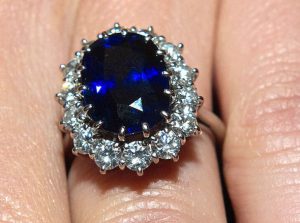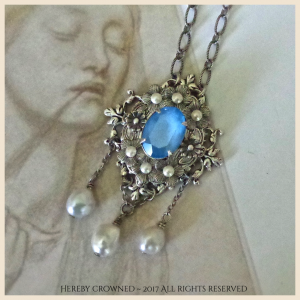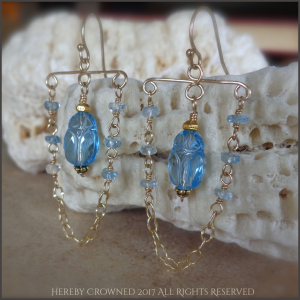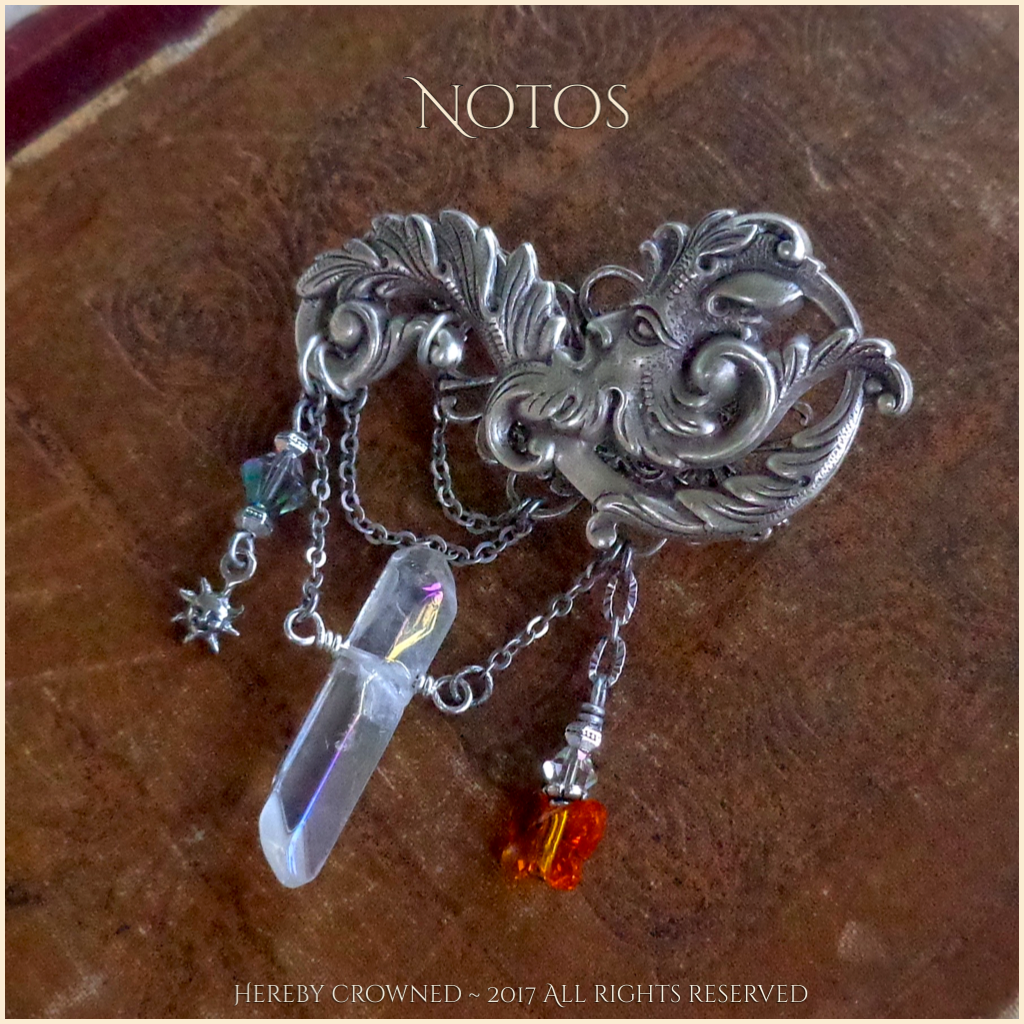
The Psychology of Design is my first blog post dedicated to Trends (or why we wear what we wear) and how the political, environmental, and social events of any given time throughout history genuinely affect how we adorn ourselves.
Trends in design have been around for as long as human beings have been adorning themselves and they are absolutely not a coincidence nor the result of a lucky designer catching the eye of a buyer for a department store.
What is fascinating is where trends begin and how trends change depending on what part of the world you’re looking at.
Admittedly, when I am perusing the costume jewelry selection within a department store, trendy looks are immediately suspect for two reasons:
- I need to know Why this jewelry look is a thing.
- I don’t want to look like everyone else unless the jewelry look in question matches my own vibe.
In America, the 1980s was probably the most trend-filled decade in all of history. Trends existed of power suits, polo shirts, high-end jewelry, relaxed linen suits, khakis, rubber shoes & bracelets, neon, band t-shirts, spandex, layered metals, leather, and vintage-inspired looks. Each look at that time was a bonafide Trend of which variants could be located in every mall monstrosity throughout the United States.
These looks in the 1980s were inspired by vast amounts of wealth that came from unchecked corporate growth, a heavier value on the entertainment, a thriving drug industry, and a rebellion against the status quo. While one could wear any of these trends they liked; There tended to be strong associations between wealth from corporations (power suits, khakis, polo shirts, and diamonds & pearls), the entertainment industry (spandex, neon, leather, layered metals), the working class or poor (vintage-inspired looks, band t-shirts, rubber shoes & bracelets), and finally, the drug industry which was often a garish blend of all the most expensive trends.
The 1990s, brought the fallout of what fueled the decadence of the 1980s. The war on drugs quelled our use of cocaine as recreation, we were working more hours and harder than ever before, technology surged like wildfire, political corruption was more visible and the corrupt were getting away with their missteps ~ and All of these progressions resulted in a society that just didn’t seem to be as interested in fashion trends overall.
The first decade of the 2000s birthed more simplistic and minimalistic fashion and by 2011, it felt in many ways like we had been stripped of our artistic identity. While there was more to choose from, most people in the United States saw the resources they once had to afford fashionable expression diminish greatly.
In 2017, the trends in jewelry are really interesting. Two elements stand out most:
- Organic materials
- Affordability
Affordability is an easy concept to grasp. Rising costs of utilities, education, groceries, and entertainment coupled with job sectors that have disappeared, wages that haven’t moved since the 1990s, and the healthcare crisis have put Americans (& much of the world) in financial conditions that are challenging at best.
Humans accessorize. That’s what we do. It’s our way of expressing how we feel and of identifying with what’s going on around us.
In 2017, what I see in my Instagram feed is loaded with organic crystals & gemstones, loads and loads of Druzy Crystal, and tassels as far as the eye can see.
Tasseled jewelry is handmade, offers a wealth of color, and is very affordable.
For those who don’t know about Druzy Crystal, it is essentially a created form (like a small disk or circle) that is filled with tiny bumps/points of quartz crystal or beads that imitate quartz crystal. It’s an inexpensive creative endeavor that offers pinpricks of light each time the piece is moved.
The trend of organic crystals and gemstones in jewelry offers a peek into who we are and why we are now gravitating toward this jewelry expression. While organic rocks range wildly in price, there is something unique and special about the feel of wearing a cut rock on one’s person. Whether the crystal has been treated, topped with precious metal, or wrapped in wire, there is no question of its origin.
With all of the political, environmental, and social dysfunction that defines our 2017 world, it should not come as a surprise that we are grasping for what feels most real, most earthy, and ultimately most predictable. While we may color, cut, or adorn them, our crystal rocks are independent from us. They aren’t manmade and many believe that the rocks of our planet offer an energy that we still don’t really understand or appreciate. Crystals descend directly from the earth and whether we wear them as necklaces, bracelets, rings, brooches, or crowns; they offer a comfort that is unique and nurturing.
I’ve no idea where we are headed as a species but, watching our evolving trends in jewelry design promises to be a most interesting adventure.
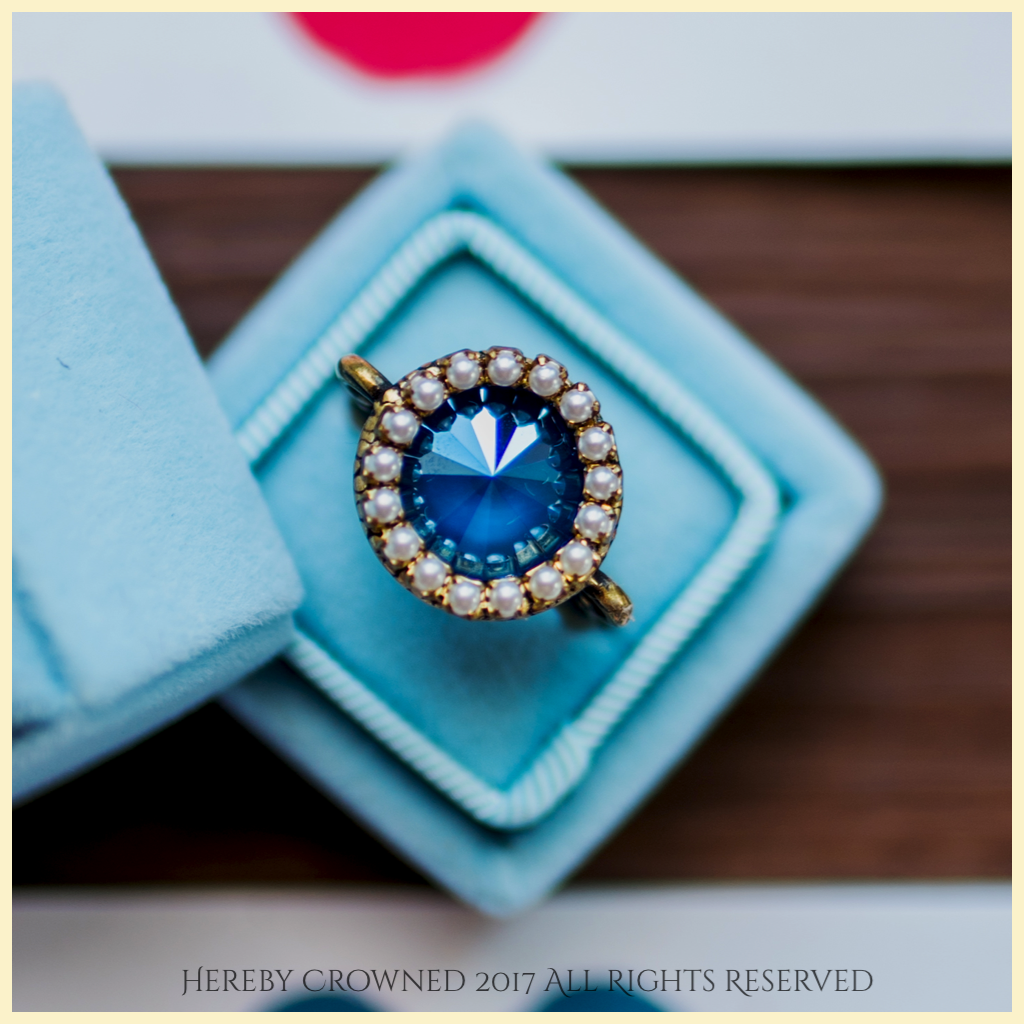
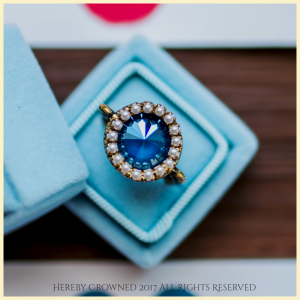 Hues of azure have transfixed us for as long as humans have roamed the earth. Blue captivates our senses and no matter how light or dark, this color always leaves us with a deep contemplation of ourselves, of life, and of the sheer wonder of the natural world.
Hues of azure have transfixed us for as long as humans have roamed the earth. Blue captivates our senses and no matter how light or dark, this color always leaves us with a deep contemplation of ourselves, of life, and of the sheer wonder of the natural world.